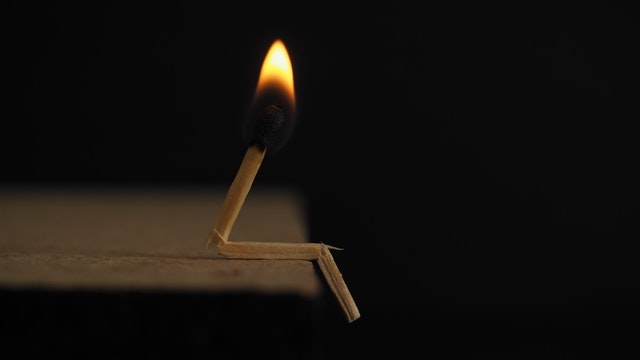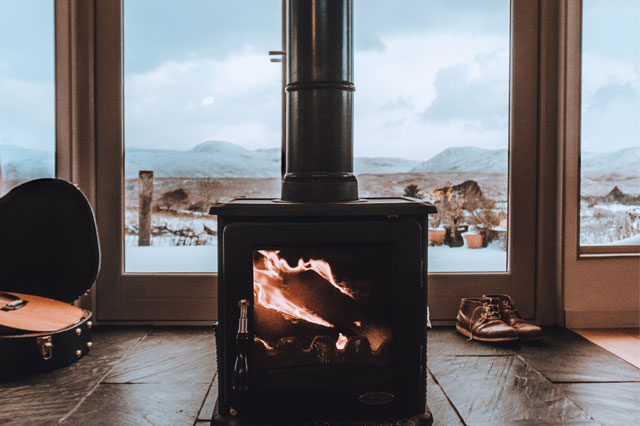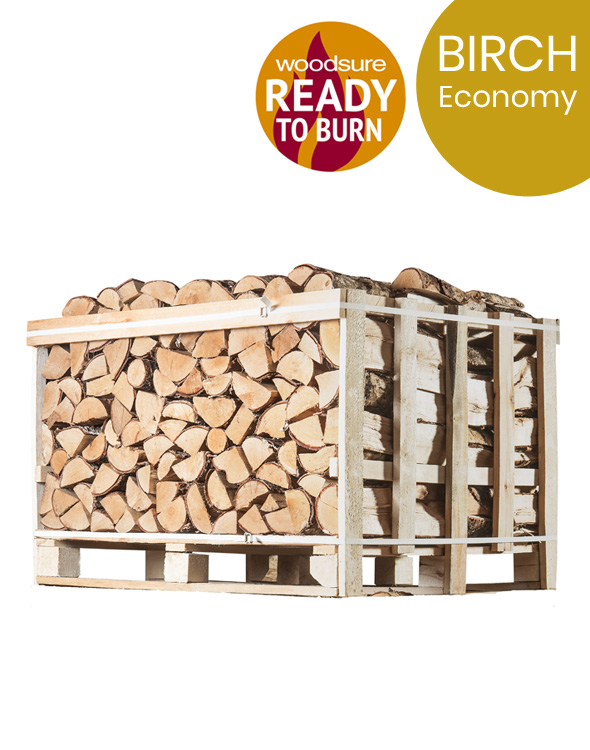29th Sep 2020
How to start a fire in a log burner
How to start a fire in a log burner
The winter is almost upon us! That late October day when the clocks change and the cold dark nights move in, suddenly the moment of truth hits you.
Time to light your fire.
Get ready to strike the match and unleash the power of the small flame between your finger tips. But before you set your wood burner aflame, make sure you know how to start the perfect fire!
The secret to a perfect fire is very much in the beginning stage, because once you have it lit properly it should burn for hours without much maintenance being needed. So here’s the step by step guide for how to light a fire in a log burner.

How to start a fire in a log burner
1. An effective less known way to start the fire is by using the valley and the bridge technique. Choose two logs with a small diameter and lay them side by side (creating the valley). Choose thinner small logs whenever possible. This will allow the flames from the kindling to quickly reach the centre of the log and evaporate any water in the log. Let it burn for a while and reach the 3rd stage we spoke about earlier in the combustion process.
2. Next, take some scrunched up newspaper or firelighters and place between the two logs. Natural firelighters are a perfect fit, environmentally friendly and catch fire really well. For kindling, this could be dried twigs that you’ve collected from around the garden and dried properly. Tip: Put twigs from around the garden in a small breathable box and put in the top of your airing cupboard. Within a couple of weeks they’ll be ready to burn.
3. Finally, lay the kindling across the logs to create the bridge. The kindling sets a fire more easily and quicker than logs and creates a large flame which can set the bark on the logs a light.
4. Take a match and light the fire lighter.
5. Open the vents and door. Now the fire is a light it’s really important that it gets oxygen. When the temperature of the fire is low at the early stages of lighting a fire, oxygen is less reluctant to get involved with the molecules in the fire. We need air in turbulence so that the oxygen cant engage with the fumes and combust more easily, this is why it’s a good idea to open the vents and keep the door open.
Read on to learn more about what to do after you’ve set your fire a light.

The Combustion Process
It’s important to know that logs go through 3 steps as they burn.
- Firstly when the log is placed on the fire, all the moisture inside begins to evaporate which takes energy and heat from the fire. This is one reason why kiln dried logs are better than seasoned logs because the moisture content is below 20% and it can progress to step 2 faster, having a better chance of catching fire and burning stronger.
2. Now the logs are hot and have evaporated the moisture within them, the wood releases gas and the gas begins to flames. This normally takes a few minutes and is the most satisfying moment as you see your preparation come to fruition. Most people think that it’s the wood that is producing the flame, but actually it’s all the gas! That’s why at the start of the fire you get such big flames.
3. Once all the gasses have been burned out we reach the third stage where the wood becomes charcoal. Now it’s time to close the vents because much less air is needed.
How to start a fire in a log burner continued
Starting a fire in a log burner does take some practice but it is a fairly easy skill to learn once you know the steps involved.
Get the correct firewood
We always recommend using kiln dried logs such as Ash and Birch because the low moisture content means they’ll burn hotter and for a longer period of time. Birch does burn a bit quicker than Ash but it can be ideal if you are only firing up your wood burner now and again.
It is much more economical to use high quality firewood as well as you’ll need less of it whereas with low quality firewood you’ll likely be adding logs continuously to keep the fire going.
Kindling and firelighters
You can’t just put logs into your wood burner and light a match - you need something to start the fire off with.
Kindling is small pieces of timber that burns very easily and pine and fir are often used for this purpose.
Firelighters also go a long way to helping to start a fire in a log burner because they will light right away and help to burn the wood in your log burner.
Stack the fire properly
It doesn’t matter how good your wood is or if you have a packet of firelighters, your fire needs to be stacked properly so it burns well.
Another method aside from the valley and the bridge that we touched upon earlier is to stack it in a pyramid shape. This includes your kindling, firelighters and if you have any paper you want to burn as well. Make sure you don’t pack this too tightly either as your fire will struggle to catch properly.
There is a bit of a debate around whether you should light your fire from the top down or bottom up. Read our blog post - Wood Burning Stove Tips and Tricks- to find out why lighting from the top down can be better.
Your logs should go in last when the temperature is hot and your kindling has been burning for a while.
Learn to use the air vents
This is vital in starting the perfect fire and we’ve even written a full blog post on this - How to use log burner vents.
The basics are that your wood burner needs oxygen to get started. The air vents help you to control the air flow into the chamber. When starting your fire these vents should be fully opened so that your kindling catches quickly and burns to a high temperature.
Once you have added your logs onto the fire you can start to close off the air vents so that your fire burns slower which will make it last longer.
This might all seem a bit complicated but it doesn’t take long to get right.
If you are finding that the fires in your wood burning stove aren’t catching properly or are extinguishing quickly, follow these easy tips on how to start a fire in a log burner and get more enjoyment out of your log burner this winter.


